Contents
Four Very Important Points Maintenance Managers Ignore them in Cement Equipment Maintenance
IF you need detailed guide for Kiln Maintenance & other Useful books and excel sheets and notes kindly click here
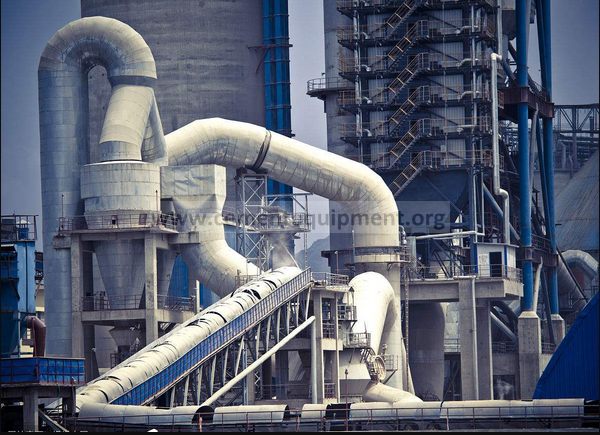
There are hundreds of equipments in a cement production line. The nature of the cement production process determines that the equipment should run 24 hours. Most of these equipments are in a high-temperature, dusty environment. How to make these equipments stable, efficient, and low-cost operation is placed in equipment management.
A subject before the subject. In enterprise management, equipment maintenance is more difficult than equipment maintenance, and it is easier to reflect the management level of a company. Maintenance is a problem to make up, and maintenance is to prevent the occurrence of problems, that is, through the previous experience and use of equipment, maintenance and other experience to summarize and analyze, and to develop a variety of work plans to ensure the normal operation of the equipment and It is implemented so that the equipment has a longer life cycle and better economy, and it is active. Let’s talk about a few neglected details in the maintenance of equipment in a cement plant. Doing this well will cost less, but it will bring better economic benefits.
Couplings
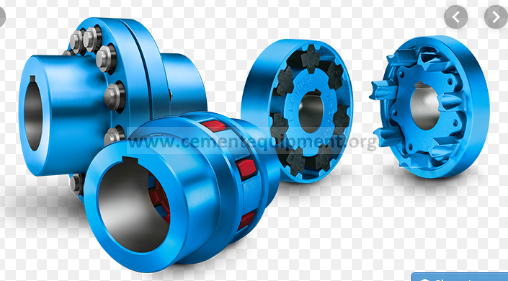
Couplings consist of two coupling halves that couple the two shafts together to transmit motion and torque. There are many couplings used in cement plant equipment, and each type has its own characteristics and scope of application. Most of the fan type equipment adopts elastic sleeve pin coupling or elastic pin coupling; the elastic ring of the elastic sleeve pin coupling is easily damaged. If it is not replaced in time, the pin hole will be oval and need to be replaced. Couplings, we know that replacing a coupling is a matter of time and effort than replacing an elastic ring. As the number of motor pin starts increases, the nylon pin of the coupling will break. If it is not replaced in time, the remaining nylon pin will break quickly, which will cause the equipment to stop and affect normal production. Belt conveyors and hoists in cement plants generally use plum-shaped elastic couplings. The plum pad in this coupling is a wearing part. It is necessary to replace the plum pad in time. If you do not pay attention to this, the plum pad is damaged. Continued operation will cause the coupling claw block to wear, and the coupling needs to be replaced seriously, resulting in several dozens of maintenance costs. Some equipments in the cement plant use gear couplings or serpentine spring couplings. These couplings must be lubricated and sealed for long-term operation. Always check the sealing conditions or replenish grease during maintenance. Failure to do so may result in toothed wear of the coupling. In addition, all couplings should be checked once a year for alignment, confirming whether the axial and radial deviations of the two coupling halves are within the technical requirements, reducing the relative displacement as much as possible, and effectively extending the coupling. Service life.
Neglect two: filter
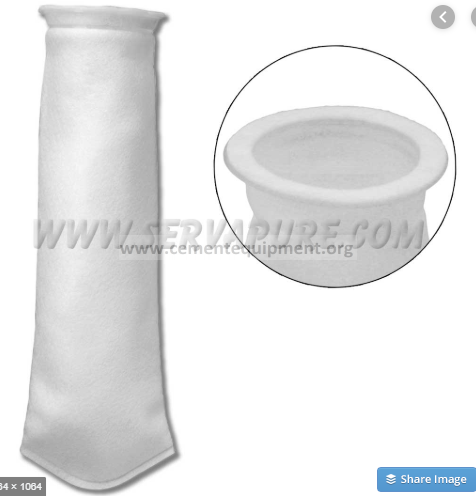
Filters used in cement plants include air filters, oil filters, and pipe filters. The air compressor and the air inlet of the Roots blower use an air filter, which filters foreign particles, dust, suspended matter, and moisture in the air. Without the blockage of the air filter, these impurities will enter the internal wear parts of the machine. When the air filter is blocked by the suspended particles in the air to the air flow that cannot meet the working needs of the machine, the device will have a muffled sound and work weak. The phenomenon is relatively high in temperature. When these symptoms appear, you can determine that the air filter is clogged and should be replaced in time. During maintenance, pay attention to the change of the color of the inner and outer surfaces of the filter element. After the dust is removed, if the outer surface of the filter paper is clear and the inner surface is bright, you can continue to use it. If the outer surface of the filter paper has lost its natural color or the inner surface is dark. , must be replaced. Oil filters are mostly used in oil stations to filter out impurities, oxides, abrasives, gels, etc. in the oil. If the oil does not pass through the filter, it will directly enter the lubricating oil circuit, and the nozzle will be blocked. The lubrication part is short of oil and causes damage. The impurities can also cause the hydraulic components to jam, causing the system to trip. The wear debris will accelerate the wear of the parts. Failure to check or replace the oil filter in time may result in a decrease in the flow rate of the oil, so that the friction surface of each of the running parts cannot satisfy the lubrication and cause damage. The pipeline filter is used in the circulating water pipeline to filter the impurities in the water. In the application, it has encountered the shutdown caused by the neglect of the pipeline filter cleaning. Therefore, in the maintenance of equipment in cement plants, we must pay attention to the cleaning and replacement of various filters to avoid equipment damage or downtime due to untimely treatment.
Neglect three: heat exchanger
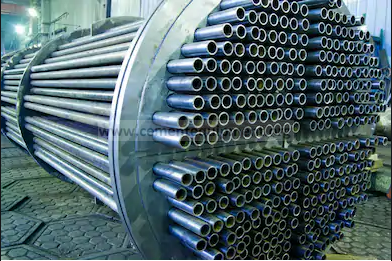
The heat exchanger is a heat exchange device. Water cooling and air cooling are commonly used. Most of the heat exchangers used in cement plants are used to reduce the temperature of the lubricating oil. Many equipments in cement plants are equipped with oil temperature alarm and shutdown settings, so the maintenance of heat exchangers is also very important. The plate heat exchanger needs to regularly clean the dust and the attached matter on the heat sink. If the heat exchange effect is worse, the end pipe cover should be opened to check the fouling of the inner wall of the water pipe. If necessary, the drug should be cleaned to ensure the change. Hot area. The air-cooled passages and heat sinks behind the electrical frequency conversion cabinet should also be cleaned regularly. Otherwise, the heat dissipation effect will cause the inverter to over-temperature and cause the equipment to stop. The cooling water entering the heat exchanger must be filtered to prevent the inclusion of particulate solid impurities and fibrous barriers. The daily inspection is mainly to observe the changes of inlet and outlet water temperature and water pressure. If the difference is small, the cause should be identified and the fault should be eliminated in time. . The internal leakage of the heat exchanger will mix the two fluids. At this time, the oil level of the fuel tank will change greatly. In the winter, it is necessary to use compressed air to blow off the internal water to prevent freezing cracks. The heat exchanger should be cleaned after cleaning. The liquid was washed and subjected to a pressure test at a nominal pressure of 1.25 times and a time of half an hour.
Neglect Four ventilation caps
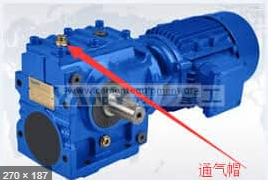
Most of the gearboxes and hydraulic oil stations in the venting cap cement plant are equipped with ventilation caps that communicate with the outside world. They are mainly used to balance the atmospheric pressure inside and outside the gearbox and hydraulic oil station, and to eliminate the internal The hot gas reaches the effect of cooling. When the gearbox runs for a long time, the internal oil temperature will rise, especially in summer. The rising temperature will expand the gas in the limited space in the reducer. In order to prevent the expanded gas from pushing out the oil from the dynamic oil seal of the gearbox, the gearbox Features a breathable cap. If the ventilation cap is blocked during the operation of the equipment, not only will the oil seepage affect the appearance, but also the temperature rise, the oil level of the reduction gearbox and the oil station will be inaccurate. The venting cap is located in the upper part of the reduction gearbox and the oil station. There is a simple dustproof net inside. If the oil leaks from the oil gauge hole or the dynamic oil seal when the gearbox is running, the oil level of the oil is within the specified range. It can be judged that the vent hole is blocked because the air pressure in the gearbox is increased during operation, and the oil is pressed out from the oil gauge hole or the dynamic oil seal when the atmospheric pressure is exceeded. In this case, the vent hole should be cleaned to eliminate the symptoms. Therefore, in the usual inspection, you should learn to observe carefully. If there is a similar phenomenon, do not let go of the ventilation cap, and solve the big problem with small treatment.
Conclusion
In the equipment management of cement plants, many managers pay attention to maintenance, ignoring the maintenance of some small, low-value parts. The effects of these components are often neglected. These components are low in amount, easy to replace and time-saving, but can play a good role in good equipment and long-term operation, and can be exchanged for lower maintenance costs. Operational efficiency. Equipment managers should record more in peacetime, summarize the regularity of maintenance and replacement of components, and it is good for reducing the cost of developing maintenance plans. It can also greatly reduce the labor intensity of mechanics.
IF you need detailed guide for Kiln Maintenance & other Useful books and excel sheets and notes kindly click here
IF you need detailed guide for Kiln Maintenance & other Useful books and excel sheets and notes kindly click here